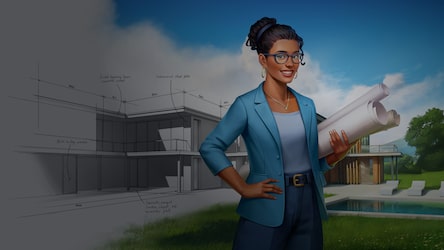Understanding the Diverse Career Paths Available for Aspiring Architect
As an aspiring Architect, you have a globe of career paths waiting for you. Whether you're drawn to standard design or the nuances of sustainable layout, there's a specific niche that aligns with your interests.
Conventional Style: Creating Structures and Frameworks
Standard design focuses on creating buildings and structures that blend performance with visual appeal. As you explore this area, you'll value the elaborate equilibrium between form and purpose. You'll discover to attract inspiration from historic styles, incorporating aspects like proportion, products, and craftsmanship. Your designs can reflect cultural heritage, showcasing local customs while fulfilling contemporary needs.
You'll establish abilities in drafting, model-making, and website evaluation, enabling you to visualize and communicate your ideas effectively. Involving with clients, you'll require to comprehend their vision and translate it into practical layouts.
Furthermore, developing codes and sustainability techniques are crucial in your work, guaranteeing your structures are safe and ecologically friendly. As you grow in your job, you'll find chances in household, business, and even repair tasks, each offering special obstacles. Accepting standard style leads the way for a fulfilling career that pays tribute to the past while forming the future.
Urban Planning: Shaping Neighborhoods and Public Spaces
As a hopeful Architect, you can play an important role as a metropolitan planner, transforming just how communities work and connect. By employing area interaction techniques, you'll ensure that citizens have a voice in forming their atmosphere. And also, incorporating sustainable design principles will certainly help produce spaces that not just satisfy today's requirements yet additionally safeguard the future.
Duty of Urban Planners
While several might assume of architects as the sole dreamers behind structures, urban organizers play a vital duty in shaping the wider landscape of neighborhoods and public areas. By collaborating with various stakeholders, you'll help create parks, transport systems, and household areas that promote social communication and access. Your competence in spatial style and community characteristics enables you to imagine future growth while protecting social heritage.
Community Involvement Strategies
Effective neighborhood engagement approaches are important for metropolitan coordinators to assure that the voices of residents are heard and valued in the preparation procedure. To foster purposeful discussion, you ought to focus on open forums and workshops where neighborhood members can reveal their ideas and problems. By proactively incorporating and listening feedback, you'll develop rooms that mirror the neighborhood's demands, ultimately leading to more sustainable and effective urban settings.
Lasting Style Concepts
When making urban spaces, incorporating sustainable layout principles is critical for producing atmospheres that thrive both environmentally and socially. You should start by concentrating on energy effectiveness, using products that lower waste and advertise recycling. Think about integrating environment-friendly spaces, like yards and parks, to enhance biodiversity and improve air top quality. Advertising walkability and public transportation can minimize reliance on autos, promoting a much healthier area.
Creating with water conservation in mind is also crucial-- think of rainfall yards and permeable surface areas to take care of stormwater. Including community participants throughout the preparation procedure assurances that the areas you create satisfy their demands and encourage social communication. By accepting these concepts, you'll add to vivid, sustainable city landscapes that benefit everyone.

Landscape Architecture: Creating Sustainable Outside Environments
As you explore landscape style, you'll find essential layout concepts that produce useful and gorgeous outdoor spaces. Sustainable methods play an important duty in ensuring these settings thrive while minimizing environmental influence. Plus, you'll discover a selection of job opportunities that enable you to make a genuine distinction in how people engage with nature.
Style Principles in Landscape
Recognizing design concepts in landscape architecture is important for developing lasting outdoor environments that harmonize with nature. You'll require to ponder components like range, percentage, and equilibrium to assure your designs really feel cohesive and inviting. Additionally, pay attention to seasonal changes, creating with materials that match the surroundings year-round.
Sustainable Practices Overview
Lasting techniques in landscape architecture not just focus on looks however likewise focus on environmental health and source conservation. You can develop spaces that advertise soil wellness, such as practicing and using natural products permaculture concepts. Eventually, these practices guarantee your designs profit both individuals and the setting for years to come.
Profession Opportunities Expedition
With a solid structure in sustainable techniques, landscape design offers a variety of profession courses that permit you to make a meaningful effect on the setting. You can work as a landscape developer, producing aesthetically pleasing and functional exterior spaces, or focus on ecological reconstruction, assisting to revive damaged communities. Urban planners published here usually collaborate with landscape architects to develop green spaces in metropolitan setups, improving city livability. If you're enthusiastic concerning education, think about becoming a landscape architecture instructor, inspiring future generations. Additionally, you could collaborate with nonprofits concentrated on ecological sustainability or take part in research to innovate new practices. Each path not just forms stunning environments yet also fosters a healthier planet for future generations.
Lasting Design: Concentrating on Eco-Friendly Practices
As you explore your career in architecture, welcoming environmentally friendly techniques can establish you apart in an affordable area. Lasting design concentrates on creating structures that reduce environmental influence while enhancing passenger wellness. By integrating sustainable products, energy-efficient systems, and sustainable building strategies, you'll add to a greener future.
Begin by gaining expertise of green accreditations like LEED or BREEAM, which can strengthen your qualifications. Think about exactly how all-natural light, air flow, and thermal effectiveness can maximize design. Work together with engineers and environmental experts to introduce solutions that reduce waste and preserve sources.
Do not neglect the relevance of community involvement-- interesting regional stakeholders can inspire layouts that integrate with the environment. As clients significantly focus on sustainability, your competence in eco-friendly practices will not just draw in projects yet additionally meet your interest for accountable architecture. Accept this essential element of the career, and see your occupation thrive.
Historical Preservation: Safeguarding and Bring Back Social Heritage
While you commence on your building journey, think about the vital duty of historical preservation in keeping our cultural heritage. This area concentrates on the defense and restoration of considerable buildings, sites, and structures that inform the stories of our past. By participating in historical preservation, you'll assist safeguard the architectural tradition that forms area identification.
As a historical preservation Architect, you'll examine historic relevance and examine the condition of frameworks. You'll work carefully with chroniclers and guardians to assure genuine remediation methods are utilized. This occupation path permits you to blend creative thinking with study, allowing you to make options that respect initial materials and craftsmanship.
Your work not only adds to sustainability by reusing existing buildings More Help however also promotes a sense of pride within areas. Embracing this course will certainly aid you come to be a guardian of history, protecting the tales and aesthetics that enrich our lives.
Inside Style: Enhancing Indoor Spaces
Historic conservation and indoor style both share a commitment to enhancing the built environment, yet they focus on various aspects. While historic conservation emphasizes maintaining a structure's historic and social worth, indoor architecture nos in on maximizing indoor areas for capability and appearances.
As an ambitious Architect, you'll discover that interior architecture permits you to mix imagination with technological abilities. You'll develop rooms that not only look good however also promote convenience and performance. This area entails understanding how light, color, and materials communicate within an area, affecting mood and use.
You'll service numerous projects, from property homes to business workplaces, making sure that each setting satisfies the requirements of its residents. By focusing on individual experience, you can change interiors right into inspiring and functional areas, making a substantial influence on just how people communicate with their environments. Welcome the chance to boost interior settings and shape the means individuals live and work.
Industrial Style: Merging Capability With Aesthetics
Commercial layout plays a vital duty in producing products that effortlessly blend visual appeals with functionality, making sure that what you utilize day-to-day is not just aesthetically attractive but also sensible. As an ambitious Architect, you could involve yourself in this field, concentrating on designing whatever from furniture to consumer electronics. Your work involves recognizing customer needs, products, and making processes, enabling you to develop cutting-edge services that improve everyday experiences.
In commercial design, you'll often team up with marketing professionals, suppliers, and designers, guaranteeing that your designs are not just gorgeous but also possible. This job path provides a dynamic atmosphere where creative thinking fulfills practicality, making it a satisfying selection for designers interested in forming the items of tomorrow.
Frequently Asked Questions
What Educational Qualifications Do I Required to Become a Designer?
To end up being an architect, you'll require a specialist degree in style, commonly a Bachelor's or Master's. Furthermore, you'll need to complete an internship and pass the Architect Enrollment Assessment to exercise legally.
Are There Qualification Requirements for Various Architectural Occupation Paths?
Yes, there're qualification requirements for different building courses. Architect. You'll need to pass tests, full internships, and sometimes seek specialized training, depending on your selected emphasis, like landscape design, urban design, or historic preservation
What Software Application Abilities Are Essential for Architects Today?

How Can I Gain Practical Experience While Studying Style?
You can gain functional experience by interning at building firms, taking part in design competitors, volunteering for area jobs, or collaborating with classmates on real-world assignments. These chances improve your abilities and build valuable connections in the industry.
What Work Opportunities Exist Outside Traditional Style Firms?
You can discover wikipedia reference various task chances outside standard style companies, like city planning, indoor style, landscape design, building administration, property development, and even functions in sustainability consulting. Each deals distinct obstacles and rewards.
Whether you're attracted to standard design or the nuances of lasting design, there's a niche that aligns with your interests.When developing metropolitan areas, incorporating lasting layout principles is vital for producing atmospheres that grow both environmentally and socially.As you discover landscape architecture, you'll find vital layout concepts that create functional and stunning outdoor areas.Recognizing design concepts in landscape style is crucial for producing lasting exterior atmospheres that harmonize with nature.In industrial layout, you'll commonly team up with manufacturers, engineers, and marketing professionals, ensuring that your designs are not only beautiful yet also possible.